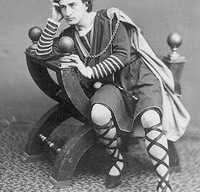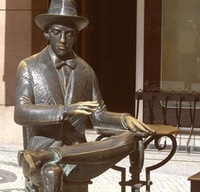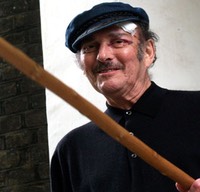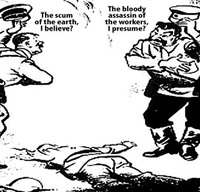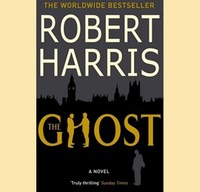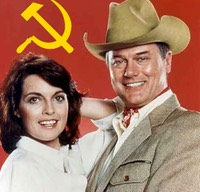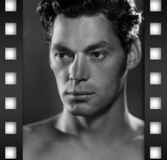Letter from Iasi
Iasi, city of writers and poets and home to Romania's oldest and most prestigious university, is justly celebrated for its vibrant intellectual and artistic life, in which the German and French cultural centres and the British Council Library all play a significant role.
Christopher Lawson
April 2005
I met the new Director of the Goethe Zentrum, Iasi, as she was packing up mounted photographs of carnivals and preparing to drive them to the Zentrum in Sibiu. Plans for an exhibition of student lithographs, the framework for her formal introduction to the great and the good of Iasi, were well under way.

Sigrun Andree was born in Agnita, 60 kilometres from Sibiu. It was a huge adventure to go with the family to Hermannstadt. In 1980, at the age of 13, she left Transylvania and her protected, rural childhood behind to join her family in Heilbronn.
The process of Familenzusammenfuehrung, of bringing the family together, took about 18 months in Ceausescu’s Romania. The late Conducator, as is now well-known, sold off his German and Jewish populations as commodities for hard currency. In the mid-1980s the approximate cost amounted to DM6000 per person.
Well aware of her Saxon identity, Sigrun admits to pangs of nostalgia when she passes hay wagons on the road, the driver talking into a mobile phone. She misses the landscape of Transylvania, but on the whole tries to avoid Agnita. Economic depression has struck the Saxon village with their neat houses. The Agnita of 2005 is no longer the Agnita she remembers.
In the 1970s and 1980s there were agonised discussions among the Saxon community about the rightness of leaving all those hundreds of years of traditions behind. But in the Federal Republic, Landsmannschaften - associations based on former German communities - flourish. In the end, Germany and the West proved too much of a magnet.
Completing her abitur in Heilbronn, one of many centres of Saxon “immigration”, Sigrun began studying medicine in Heidelberg, and then in Berlin, where she witnessed the fall of the Berlin Wall in 1989. From village origins, she had begun a new phase of her life as a city woman.
In Berlin, working as a photographer, Sigrun found herself drawn to the world of the arts. She went to concerts, everything from jazz to classical music, the theatre and dance, practically every night.
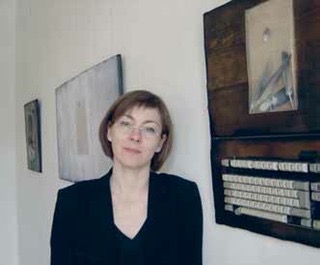
Now she knew where her future career would take her. Sigrun abandoned medicine with a degree, opting instead for a master’s course in culture management, finally obtaining her diploma as a media counsellor in 2000. The course was intensely practical, with plenty of attachments to orchestras and dance groups. She managed stand-up comedians and organised festivals. On the way she also picked up another qualification as a translator/interpreter in English and Spanish.
This interview was conducted in the fluent English of this staatlich geprueft Uebersetzer - authorised translator - which Sigrun honed working with IT teams from London to Sunderland on secondment to Germany.
“What was the largest event you took part in?” I asked.
“That would have to be Pink Floyd’s The Wall, a massive spectacle held on Berlin’s Todesstreifen, the no man’s zone, to celebrate German reunification. I was working as a photographer at the time. Marianne Faithfull was also making a video that was shown at the show.”
Her previous job was with the Institut fuer Auslandsbeziehung, an organisation supporting German minorities in Eastern Europe. The main office for Romania was located in Sibiu. Working with local partners, she put on plays, held exhibitions, and organised summer camps. In Sibiu? The obvious questions arise. “No,” says Sigrun firmly, “I went for the job. I’d always worked on projects.”
Now established in Romania, Sigrun joined the Goethe Zentrum which also works with local partners, Kulturgesellschaften, involving local people in every activity. The Goethe Zentrum in Iasi rests on two pillars, German-language courses and cultural activities. Most funding comes from Germany.
So what’s the difference between the Goethe Institut and a Zentrum? “The Institut is a huge organisation that represents Germany all over the world. It is centrally organised with headquarters in Munich and institutes across the world. The Goethe Institut supports the Zentrums, which however receive most of their backing from local partners. They do not necessarily have any German directors or staff,” she said.
The 2005 programme of the Goethe Zentrum is balanced and ambitious. There will be lectures, exhibitions, three theatre performances, presentations of novelists and poets, music, with a particular emphasis on works translated into Romanian or with a Romanian connection. The centre’s art gallery offers a forum for young Romanian artists.
As ever, the centre will cooperate with local partners, the Periferic Festival, which offers performances and installations, Cuza University, the Xenopol History Institute, and the National Theatre of Iasi.
In March there were two days of celebration of the extraordinary life and work of Aglaia Veteranyi, born into a circus family in Bucharest, who roamed Europe performing with her parents. Illiterate until she was a teenager, Aglaia learned to read and write German and became a novelist whose principal subject was identity.
The video artist Lillevän and the musician Marc Weiser will visit from Germany, as will the Ulrich Gumpert Jazz Band for the Richard Oschanitzky Festival in May. Jürgen Bothner and Romeo Cosma held a jazz concert in March.
The pianist Andreas Henkel will give a concert at the Philharmonic and hold a one-week master class at the music school in April.
To celebrate the Austrian Nobel literature laureate, Elfriede Jelinek, the theatre will put on one of her plays. There will be a showing of The Piano Player, a movie based on a Jelinek novel, with lectures and discussions. And this is not the only example of German-Austrian cooperation. Earlier in the year the Zentrum gave financial support to the Pygmalion Theater of Vienna which put on The Wonderful World of Sigmund Freud, a hilarious (and very Viennese) account of Freud’s use of the Grimm Brothers Snow White myth with three of his hapless, early subjects.
Nor does the Zentrum forget the 50,000 student population of Iasi. Apart from the language courses, there are regular activities for students, a film club and a music club run by Iasi’s indefatigable Mr Music, George Panzaru, who offers talks and DVDs on every musical subject under the sun, from Kraut Rock to Scandinavian jazz, from Celtic music to Leonard Cohen. In the autumn there will be a German exhibition and urban project linking art, sociology and architecture, showing pictures and interviews with people who live in the Allee der Kosmonauten, a huge alley in East Berlin.
In the summer, for young and old alike, in the setting of the splendid garden of the Zentrum, there will be a Ceai dansant or Tanztee, with German and Romanian dance music from the 1920s.
Plans for the end of the year and 2006 are closely linked to the football World Cup which will be held in Germany. There will be an exhibition of Magnum photographs, for example.
In 2005 there are three notable commemorations of the deaths of great Germans. Friedrich Schiller, poet, historian, essayist and playwright, joint founder of modern German literature with Goethe, wrote passionately and enduringly of freedom and idealism at the turn of the 18th and 19th centuries. His An die Freude, the Ode to Joy, set to music by Beethoven, has become the anthem of a united Europe.
Two thousand and five also marks the anniversary of the deaths of three notable Germans. Friedrich von Schiller died 200 years ago. Albert Einstein and Thomas Mann died in 1955. It is also 100 years since Einstein’s miraculous year of 1905, when, at age 26, the physicist published three papers which changed the way we look at the world. The Nobel Prize winner, whose contributions to physics encompass far more than the theory of relativity, was born German, then became a Swiss citizen, and German again, finally adopting American nationality.
Thomas Mann, the epic novelist, short story writer, essayist and, for a son of sober, bourgeois Luebeck, improbable gay icon, was another German Nobel laureate who, for political reasons, became an American citizen. All his life, as his massive novels illustrate, Mann was torn between the comfortable, common sense values of his Northern merchant father and the sensual, artistic world of his Brazilian-born mother.
But Sigrun will leave full celebrations of these internationally celebrated figures to Romanian partners. Outside the Zentrum, on Copou, the university hill, a few salient quotations from the masters will fly on special banners, a muted reminder of Germany’s colossal contribution to the arts and sciences.
